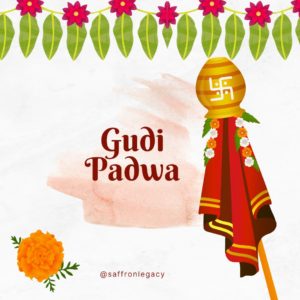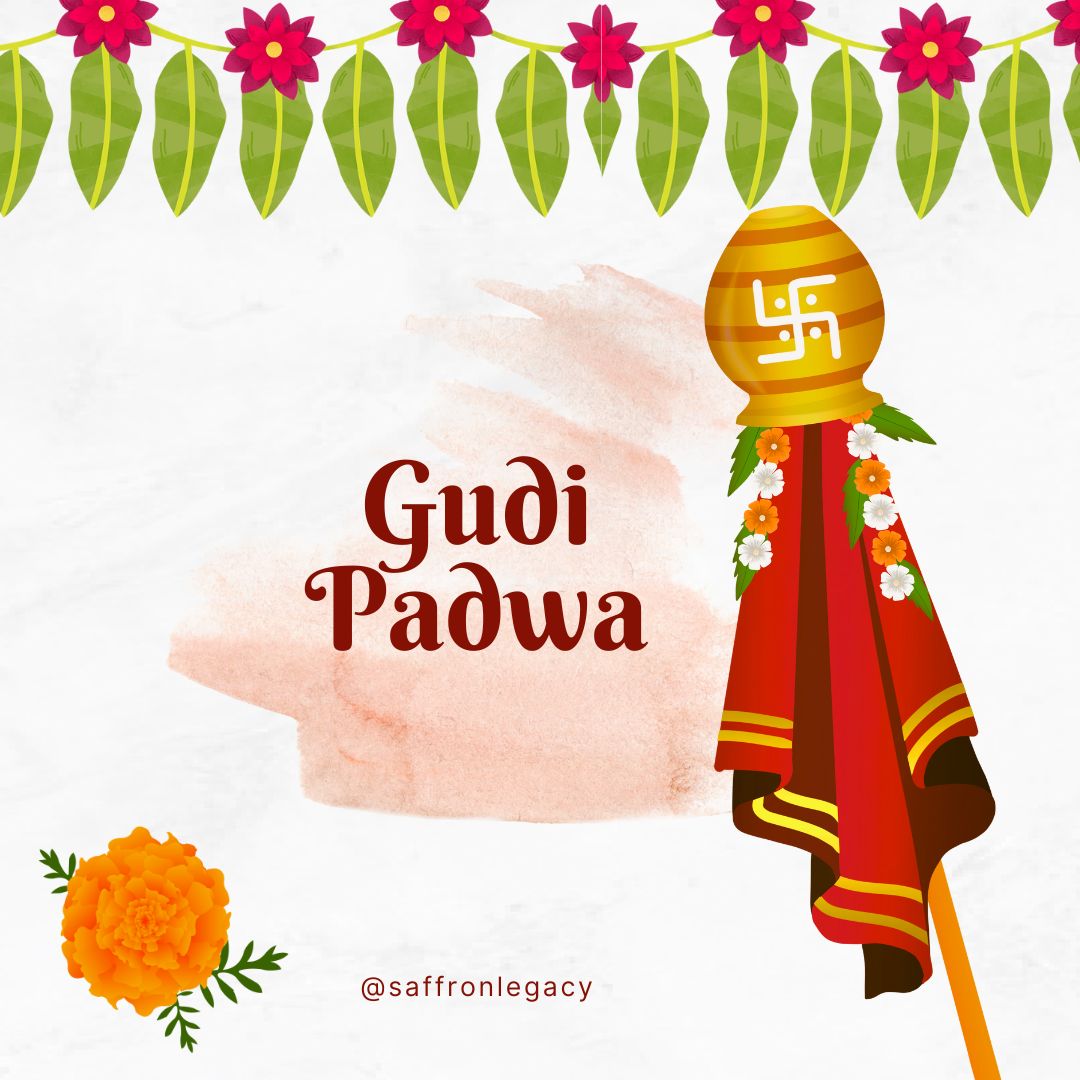Gudi Padwa is an important festival which is celebrated throughout the state of Maharashtra in Bharat (India) Gudi Padwa is celebrated as the New Year by Hindus in Maharashtra.

An interesting fact to note is that the first day of Hindu new year is different than the Gregorian calendar that we follow worldwide. The interesting fact is the Indian financial year is in line with Hindu calendar year and it starts in April which is Chaitra month as per the Hindu calendar. Hence Chaitra pratipada is the first day of Hindu calendar year. Chaitra Shukla Pratipada means the first day after the new moon in the month of Chaitra or you can also say it as the first day during the waxing phase of moon in the Chaitra Month.
This day is celebrated as ‘Gudhipadwa’ in Maharashtra and Karnataka.In Andhra Pradesh they celebrate it as ’Ugadi’. In Punjab and Northern parts of Bharat it is celebrated as Baisakhi, in southern part of Bharat as ‘Vishu’ and in West Bengal as ‘Naba Barsha’. It is celebrated in middle of March and April
Though the names are different at different locations the concept of new year is still the same everywhere in Bharat.
This festival is celebrated at the onset of spring season.
It is in line with the nature as in this month the harvest season starts , we can see the trees flowering and new leaves emerge from their buds and everywhere there is freshness. You can hear chirping of cuckoo bird. It’s the season of mangoes that adds beauty and taste in this month which is the best part of the season.Now that we have seen about the natural significance during this period, lets find out about the historical significance of Gudi Padwa.
Another tale signifies this day as the day when Bramha created the Universe. It is therefore rightly the New Sanvatsar or the New Year Day. The ‘gudi’ symbolises Brahmadhvaj or Brahma’s flag.
Lets dig a bit deeper to find how is Gudi Padwa celebrated:
Gudhipadwa is celebrated by hoisting Bamboo stick adorned by silk or cotton material, mostly a saree , either green or yellow colour. The saree is adorned by making pleats of it. It is decorated with garland of marigold flowers and mango and neem leaves..The garland of sugar cubes popularly known as ‘Battashe’ in regional language is also tied to it. A holy kalash(pot) is tied upside down to that stick and it is hoisted outside the house.
The Gudi is symbol of victory,.holiness, prosperity, good health and a way to have positive vibes and energy in your house. Gudi is treated like flag. Flag is also a symbol of victory & triumph. In ancient time people used to welcome the triumph of warriors by hoisting flags ie gudi.
You might like reading about Holi here
All family members with traditional attire come together and worship gudi. They together pray for the best future in the upcoming year which they believe will bring happiness, health and success in their lives.
There is one interesting ritual followed by people celebrating Gudi Padwa. People eat neem leaves after they worship gudhi. The neem leaves are very bitter in taste. Ever wondered then why would one eat it on such an auspicious occasion?
The reason is very simple. We do not know how the upcoming year would be..it may have sweet moments and some bitter moments too..So one should adore and accept each part of life in future and be prepared for it. To remember this message the neem leaves are to be tasted by everyone in house that day. This festival is celebrated with delicious dishes like Shrikhand Puri, Basundi, Puran Poli etc.
Gudi padwa is also considered to be one of the best and auspicious times called as muhurat to start with something new. So people plan their car purchase, house warming or any start of business, gold or diamond purchase on this auspicious day.
In some region people celebrate it by taking parts in rally with traditional attire and with beats of lezim, drums and then do their folk dance in a traditional attire. People wish each other by depicting or showcasing culture.
Thus Gudi Padwa can be rightly termed as New Beginning of New Era

About Author – Sampada Sardesai
I have done my masters in Business administration and finance.I have also done a Diploma course in Sanskrit. Working as a Finance Manager in Mumbai, India. And also working as a Sanskrit tutor for Middle year program students (8 to 10 grade). I love singing and travelling, reading books
I hope you have enjoyed reading this blog. We would like to read your feedback on this topic. Please comment below to share your views. Alternatively, you can write to us at saffronlegacy01@gmail.com
Please don’t forget to share this article with your family and friends





I love how you break things down so clearly.